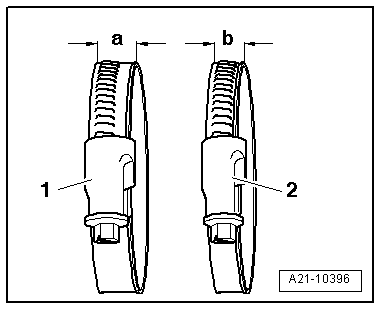| Charge air cooling - exploded view |

Note | t
| The supercharger air system should not leak |
| t
| The flexible hose sleeves and the other turbocharger air system hoses must be free from oil and grease before the assembly. |
| t
| Apply a lubricant for rubbers free from silicone and oil on the leaking surface and on the joint ring. Do not use lubricant products containing silicone or oil. |
| t
| Replace the joint rings where damaged. |
| t
| On replacing the joint ring, place it on the turbocharger hose groove and check that the joint rings cover the entire groove perimeter to prevent damage. |
| t
| To fix the turbocharger hoses to their connection sleeves safely, if already used clamps are used, their bolt threads should be sprayed with an anti-corrosion spray before the assembly. |
|
|
|
 Note
Note

